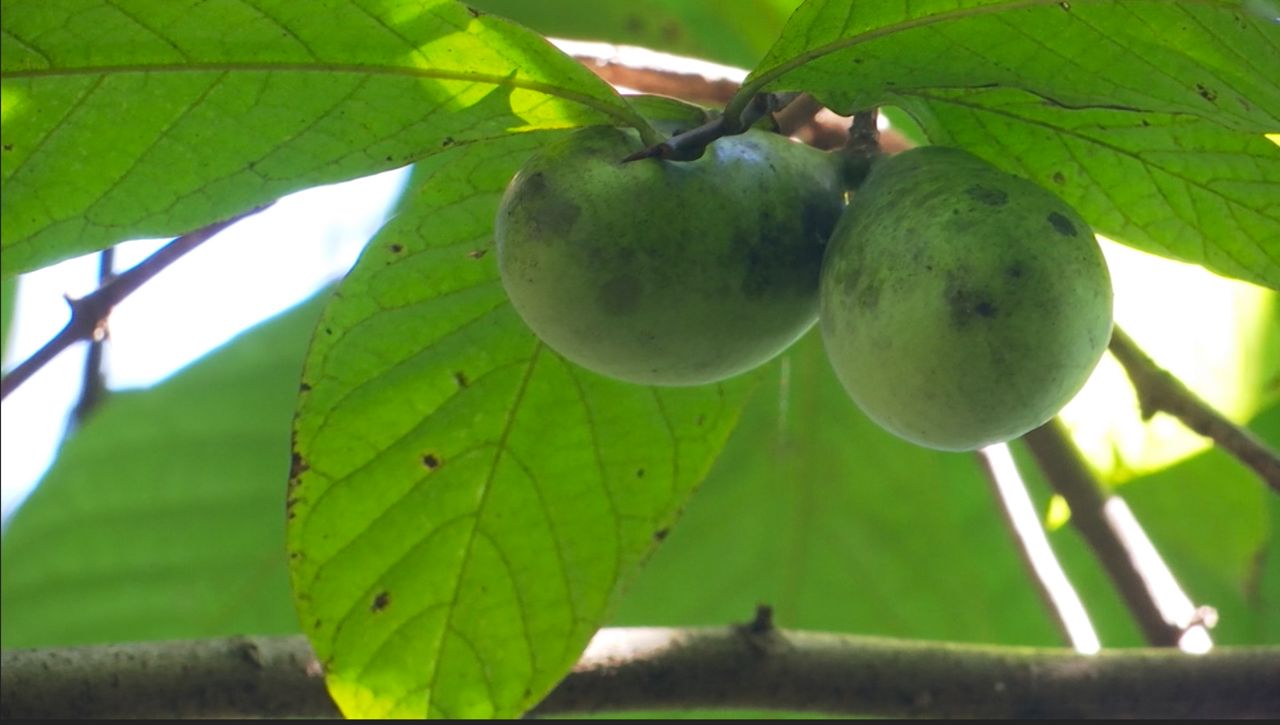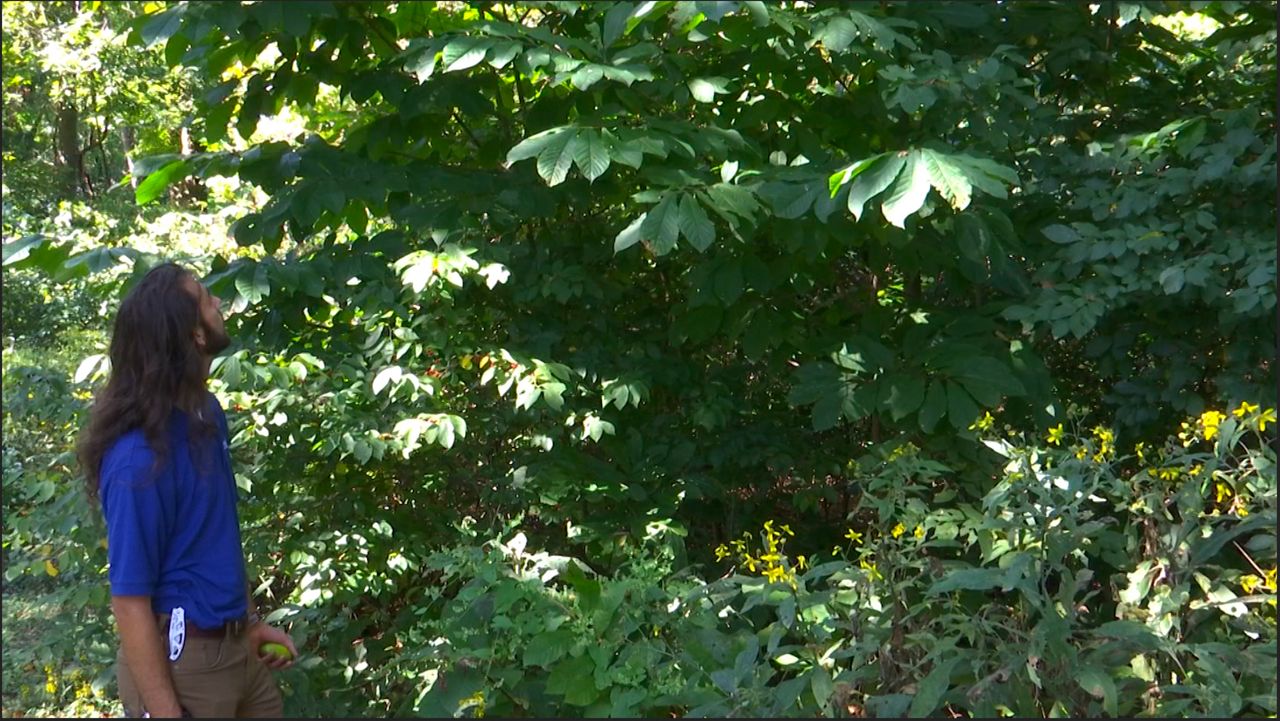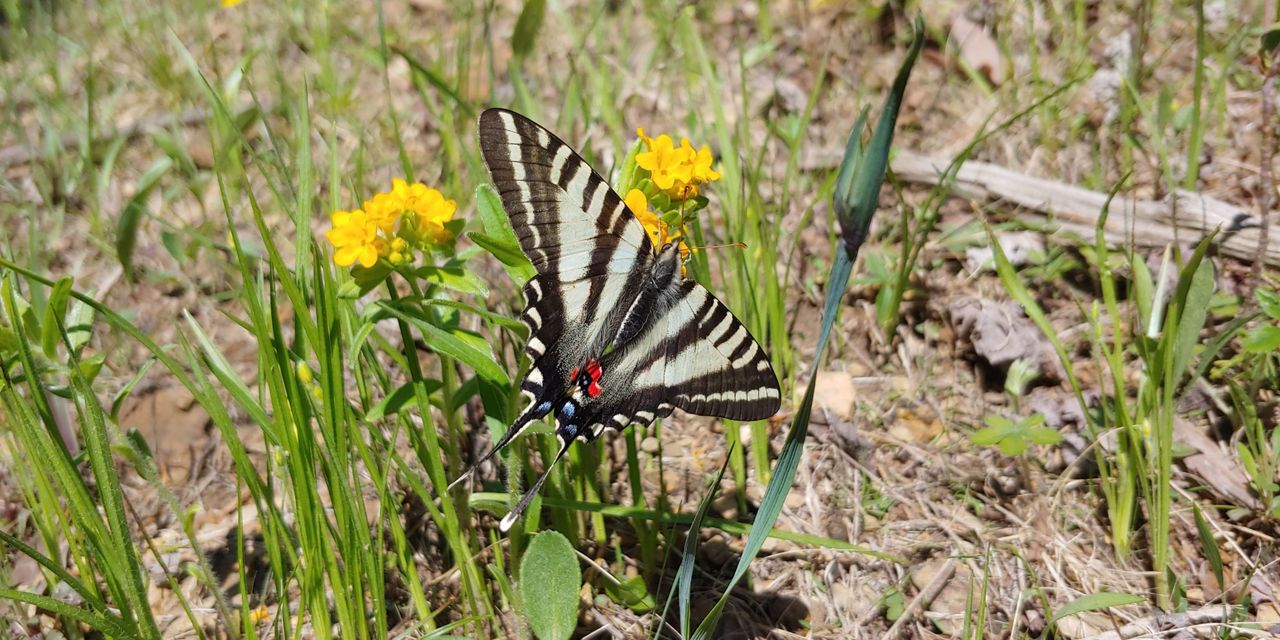NORTH BEND, Ohio — Come September, before the bright yellows and reds start to line the trails at Shawnee Lookout, hikers might notice another surprising signal of summer’s end. A sweet, tropical smell along the forest’s edge that means the pawpaws are ready to drop their fruit.
What You Need To Know
- Pawpaw trees are native to eastern North America and naturally grow in Ohio
- The trees fruit in late summer and early fall
- Pawpaws serve as habitats for local insects, including butterflies
- The fruit can be found through foraging or grown in a home garden
Native to eastern North America, the pawpaw is a distant relative to a number of fruits found in the tropics and has a taste described as a cross between a mango and a banana.

The trees grow in places like Shawnee Lookout in droves due to its history as the ancestral lands of the Shawnee people. The fruit was an important part of the indigenous culture’s diet, but after the tribe’s removal, its cultural ties to the region and its people faded.
Now, naturalists like Jack Fogle with Great Parks of Hamilton County hope a growing interest in the fruit can help the pawpaw and other native plants have a regional resurgence.
Fogle said he started noticing more and more curiosity about the fruit and where it comes from during the height of the pandemic.
“A lot of more outdoors-focused programming hit the public sphere and so people were more encouraged to go outside, more encouraged to use public spaces,” he said.
The fruit is common enough to find in your backyard, but rare to find on grocery store shelves. Due to that paradox, the fruit started sparking new interest in exploration and foraging.
“The reason that you probably haven’t heard of them is that they’re hard to cultivate,” Fogle said. “Once they fall, once they’re ready to eat, they go bad pretty quick.”
That doesn’t leave much time to transport the fruit to a grocery store, but it’s plenty of time to take home from a hike. For foragers interested in finding these fruits, Fogle recommends looking for the large, unique leaves the small trees put out and their smooth bark.
“You can always tell a pawpaw by their leaf shape,” he said. “It’s really oblong and has a pointed tip.”
Next, to ensure the fruit is ripe, don’t pick it, shake the tree to see if any come down.
“They’re ready to eat when they fall,” he said.

At that point, Fogle said the pawpaws are ready to eat either then and there ... or in an experimental recipe.
“Some people will make pawpaw bread, pawpaw hot sauce, pawpaw smoothies,” he said. “I’ve even had pawpaw syrup and it was really good.”
Rules about foraging vary among park systems in Ohio, however, pawpaw foraging is allowed in any of Ohio’s 24 state forests.
For those uninterested in foraging, Fogle said the pawpaw also makes for a good tree to add to your home garden, though the slow-growing tree will take about a decade of investment until it matures enough to fruit.
“But if fruit’s not all you’re worried about, before that 10 years is up, you’ll get beautiful butterflies, beetles, you’ll get a lot of pollinators,” he said.

For example, the zebra swallowtail butterfly relies on the plant for its survival.
“Their eggs are only laid on pawpaws,” Fogle said. “The caterpillars only eat pawpaw leaves.”
Other ways to try pawpaw are through the state pawpaw festival in Athens County, and occasionally at local farmers markets.
As the trees see a resurgence in popularity, Fogle hopes that interest will bring more of these and other native plants back into the region, helping the natural environment thrive.
“The forest will grow just a little bit better if there’s more pawpaws around,” he said.



